|
Dec. 14, Sun. We packed up and flew from
Chiang Mai directly to the Phuket airport. Nipon, our guide, met us and we drove
over to the eastern side of Phuket Island. Ao Po Pier on the Phang Nga Bay
was our launch point. We jumped in a big long boat with all of our luggage
for a ride through this bay/national park sprinkled with large limestone rock
outcroppings.
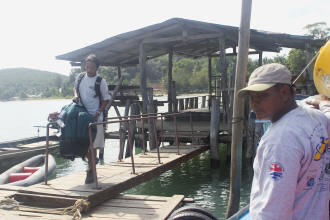 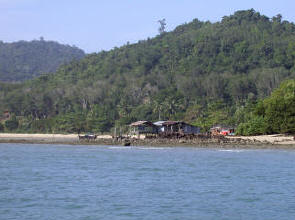
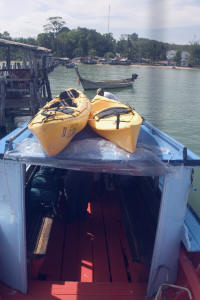 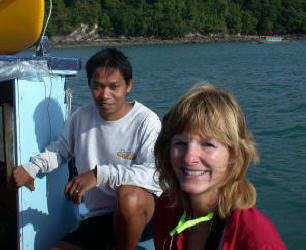
Within the rock masses are tidal caves that lead into giant open room-like spaces called
hongs. Geologically the hongs are sump holes of dolites. Abundant plant life and mangrove swamps thrive on the rocks and
inside the hongs. It is around and within the hongs that we kayaked in order to
experience the scale and texture of these geologic wonders.
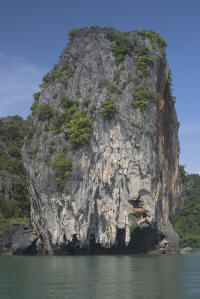 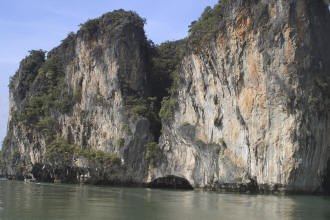
The overhangs are created by tidal erosion and the notch between the water
level and the overhang is known as the "nape". Limestone is brittle and
easily dissolved in rainwater. Fine silt mixed with water cut the
limestone into jagged and grotesque structures called "karst". Each hong
has its own karst designs following across the rock face.
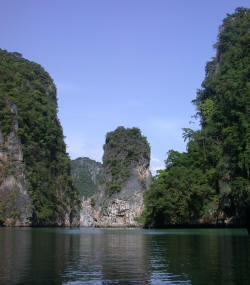 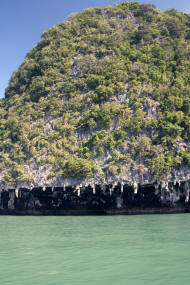
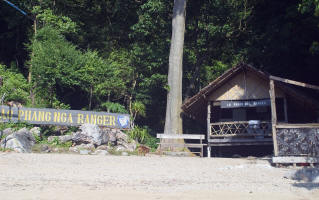 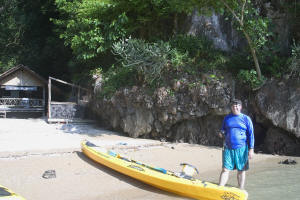
Like national parks all over the world, we were obligated to
obtain permits for kayaking and boating in the bay. We stopped at the
Phang Nga Ranger station to pick up our passes and take a refreshing dip in the
water.
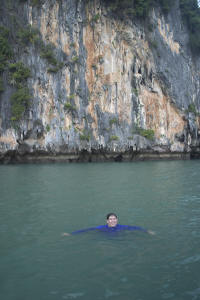 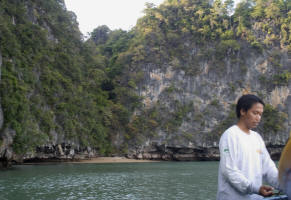
After an afternoon of kayaking we climbed back aboard our
long tail boat and headed over to Koh Yao Noi Island where we spent the
next few days.
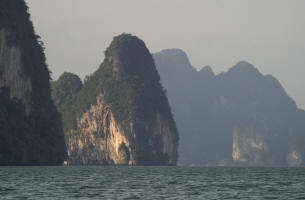 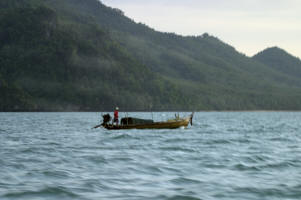
We unloaded our bags onto the dock at Tha Khao, a fisherman's village, and wheeled them up to a sport vehicle
waiting to take us down the beach to the bungalows, owned by our long tail boat driver, where we were spending the night.
Many industrious Thai have set up their own business catering to tourists with
small beach bungalows and boat service throughout this region. Large
developers are just now starting to buy and develop some of these more remote
coastal sites in the bay primarily since Phuket and its surrounding area are
becoming crowded and commercialized.
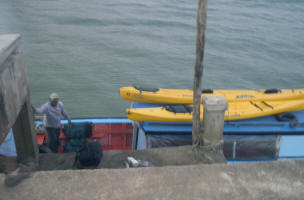 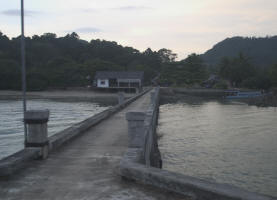
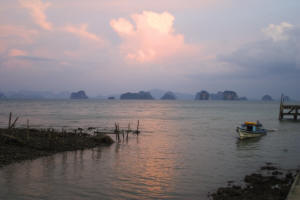 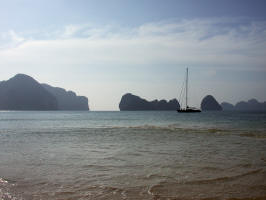
Our bungalow, one of five, situated on the beach looked out
onto the bay and the hongs in the distance. We took our meals together
with the other guests sitting on the porch of the family's house. Our
cabin was split into two units with a bedroom and bathroom on each side.
It was a little like camping out: cold water and a gravity toilet in which we
filled the tank with water after flushing. The buildings were all raised
above the ground and we were able to see through the timbers on the floor thus
making mosquito netting an absolute requirement for sleeping.
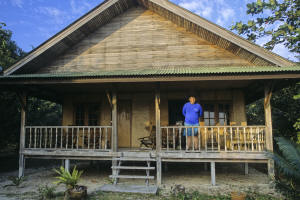 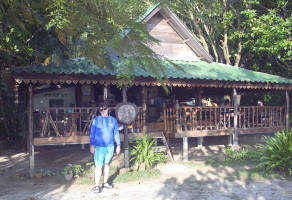
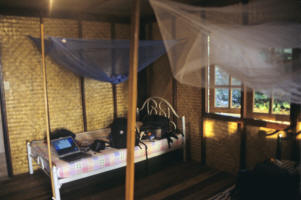 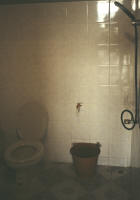
Dec 15, Mon. We were up early and on the boat by
8:30 cruising out to our first island. The spot was idyllic with white,
sandy beaches and warm, calm waters. Although we could have remained
longer, we unloaded the kayaks and paddled around the island and across the
inlet to view a cave on the neighboring hong.
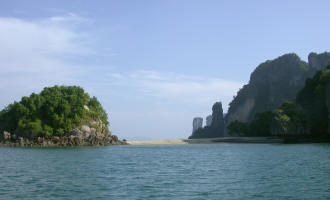 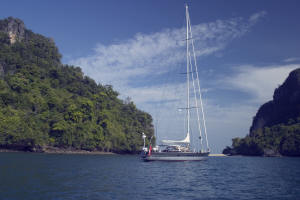
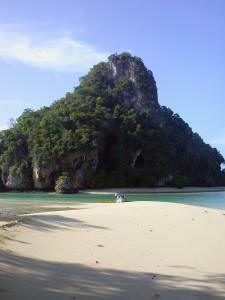 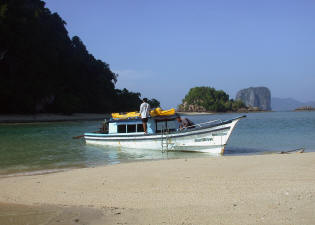
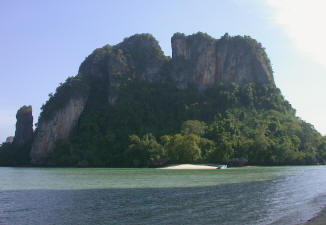 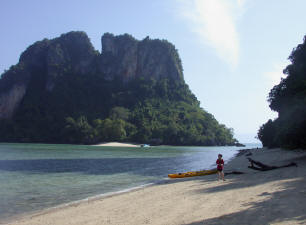
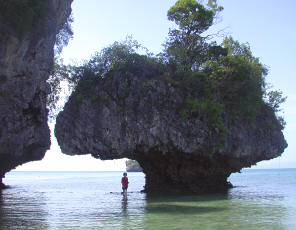 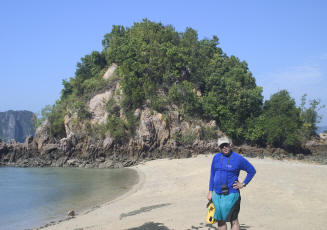
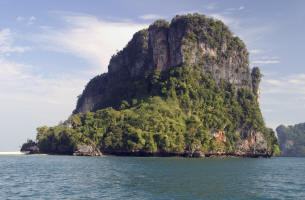 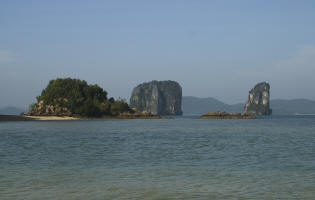
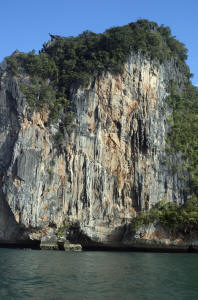 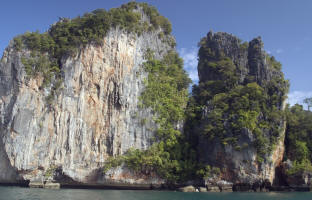
We visited several other hongs in the morning. In one
we
walked among the mangroves inside an interior room where the tide had receded.
In another we pulled beside a boat full of local fishermen and watched them
harvest the conch meat from their shells. The rhythm of our trip was
dictated by the tidal flows in and around the islands. Entry into and
exist out of the tidal caves of the hongs is often only accessible at low tides.
There are a number of stories floating around about guides and tourists stranded inside these
islands.
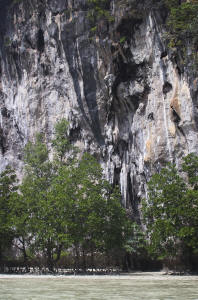 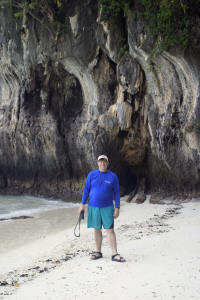
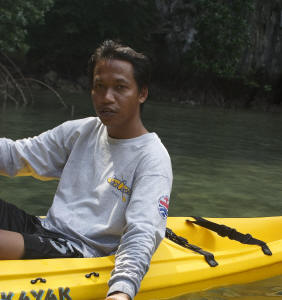 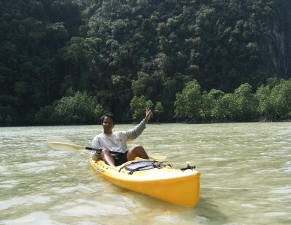
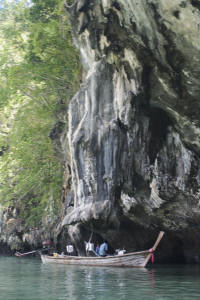 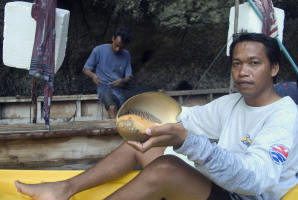
We then boarded the boat and headed toward the
eastern mainland of Thailand. On a small island along the way, we stopped to kayak,
snorkel and have our lunch. The Thai food tasted fantastic after working up an
appetite during our morning paddle.
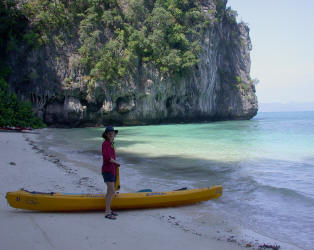 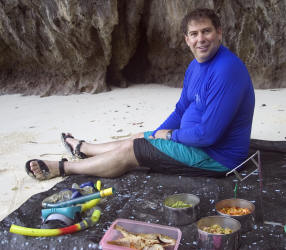
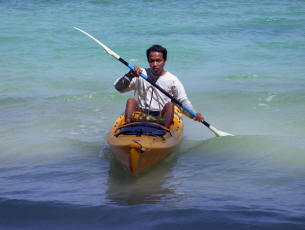 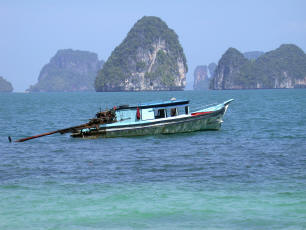
Further east, we kayaked around a mangrove seed farm adjacent to a large hong island. The interior of the hong was a maze of mangroves with
a narrow path of water merely wide enough for our boat. The silence was broken
by the chatter of the crab-eating macaque monkeys and native birds (kingfishers,
white belly sea eagles, egrets and kites). Upon returning to the open water, we had
head winds and strong currents which made our trip back to the boat a challenge.
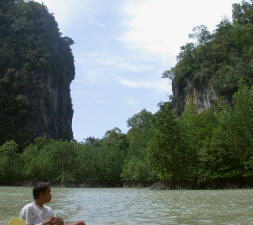 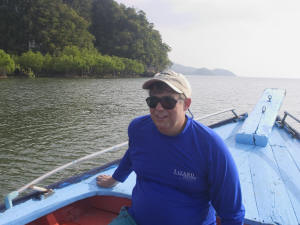
At the end of the day we returned to the same pier from which we had
launched in the
morning. Although the resort where we were spending the next two nights
was located a mile up the coastline, the long tail boat could not land on the beach
due to the high winds.
An open taxi-type vehicle picked us up and drove along the coast to the Koyao
Island
Resort. Along the way, the local villagers were constructing a
section of road that will link the existing paved sections from other small
villages around the island.
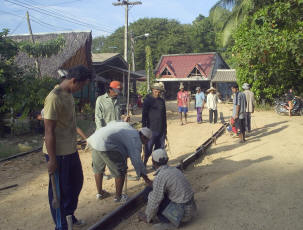 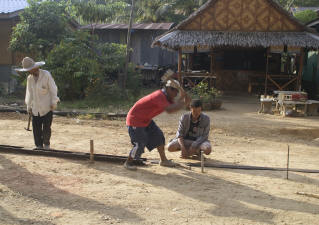
The lovely grounds and the individual beach suites contributed to our
tranquil stay at the Koyao Resort.
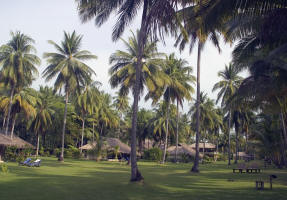 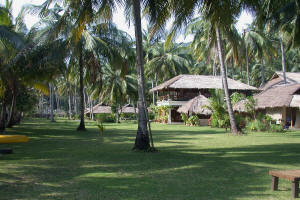
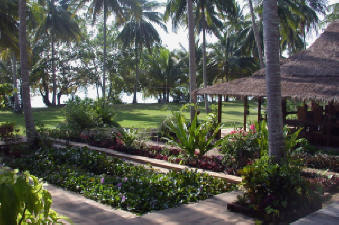 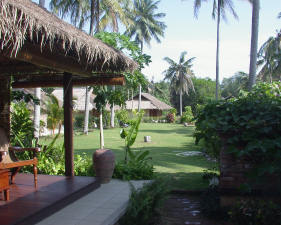
We took our meals in the open air porch of the dining facility (below left).
We both had a soothing message on the upper level of the spa/bathhouse (below
right) looking over the emerald green waters of the bay.
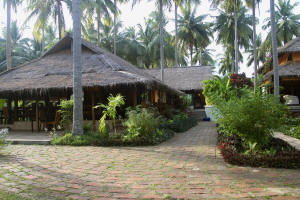 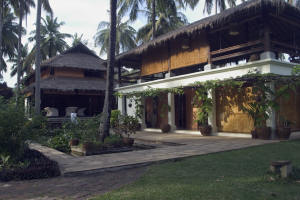
Dec 16., Tues. In front of our suite we drank hot tea and read for a few
hours in the morning.
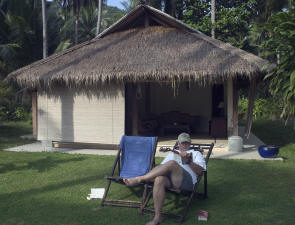 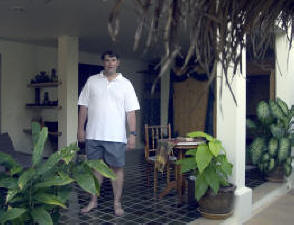
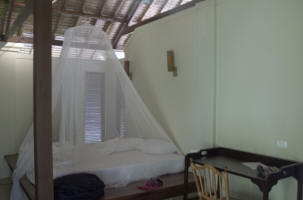 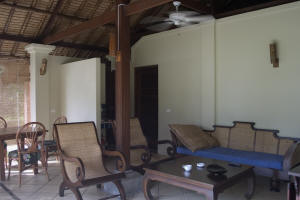
After a leisurely breakfast, we took a walk up the beach and caught some of
the crab artwork in the sand as well as the beautiful views.
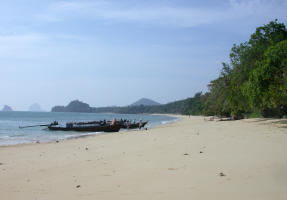 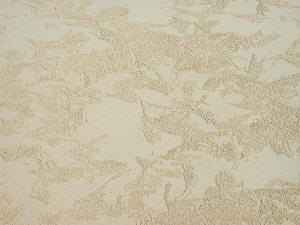
We borrowed bicycles from the resort in order to peddle around the island.
The roadway was approximate 75% paved and the rest was interspersed with gravel
and dirt. We left the resort and headed south. On this side of the
island were many rubber farms. These are usually run by Muslims with Buddhist
workers from Burma, Indonesia and Malaysia providing the labor force.
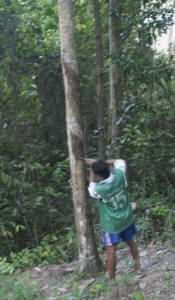 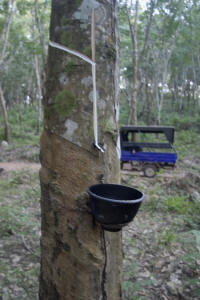
In rubber farming the trees are planted in groves. The exterior of the
bark is cut just deep enough so that the rubber milk drips downward into a catch
basin due to gravity - just like maple syrup. The rubber milk is
treated with a water/acid bath and rolled into sheets that are then hung out to
dry. Since there is no safe way to drain the run-off in this process it is
an ecological nightmare.
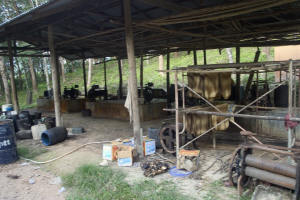 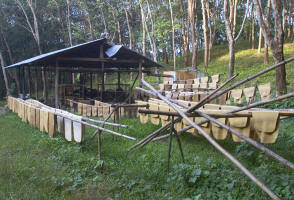
As we moved further south we saw more rice paddies and water buffalo. The
village people were finishing rice harvesting and processing: cutting, drying,
roasting, winnowing, and bagging. Drying often occurred on tarps on the roads
and highways.
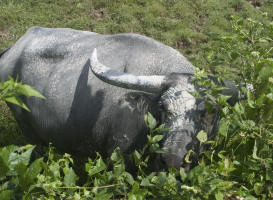 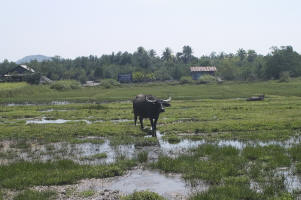
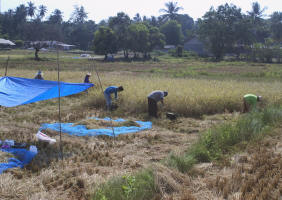 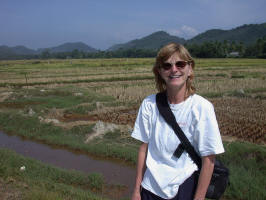
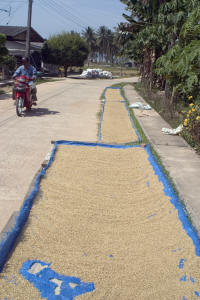
At the south end of the island there is Ta Manoh, a major pier for the island.
Here Jon answers a few voicemails. There is a large Muslim school at the start
of the pier.
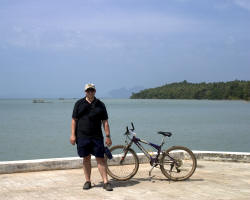 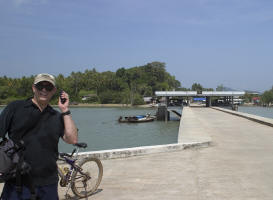
We selected a little cafe in town for our lunch. We watched while the
restaurant owner made several trips to the market down the street to get the
ingredients for our dishes: chicken, bok choy. Our food was very fresh and
hot.
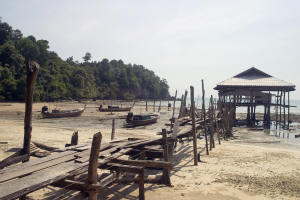 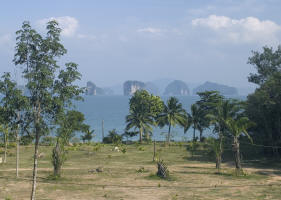
After lunch we biked the western side of the island. The rice paddies remained
until we reached Tha Tondo, northwest coast, and started our ascent up the only
hill on the island. At the top of the hill the tropical forests and rubber tree
groves returned and we knew that we had almost completed our ride around the
entire island.
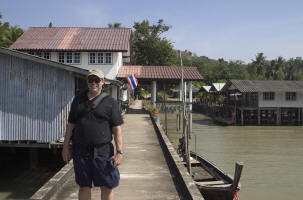 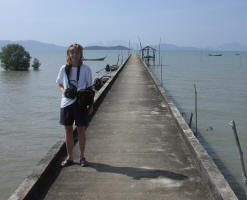
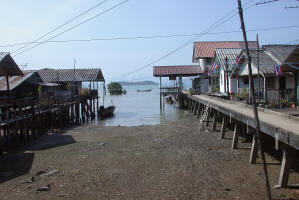 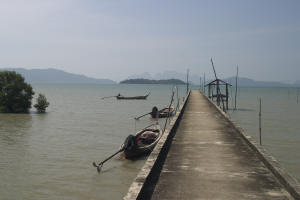
Dec 17, Wed. This was a truly relaxing day of
sun, rest and reading at the resort. By 4pm we were packed up and ready to
leave when our long-tail boat arrived to pick us up on the beach. It took
about 70 minutes to get back to Phuket and then on to the airport. We
spent the night in Bangkok so that we could catch our early morning flight to
Hanoi, Viet Nam.
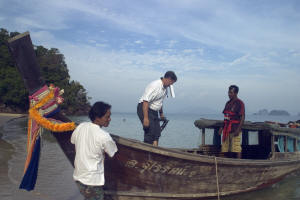 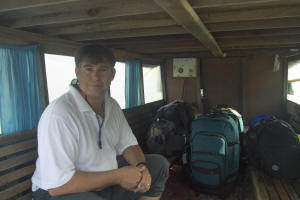
On to Vietnam
|